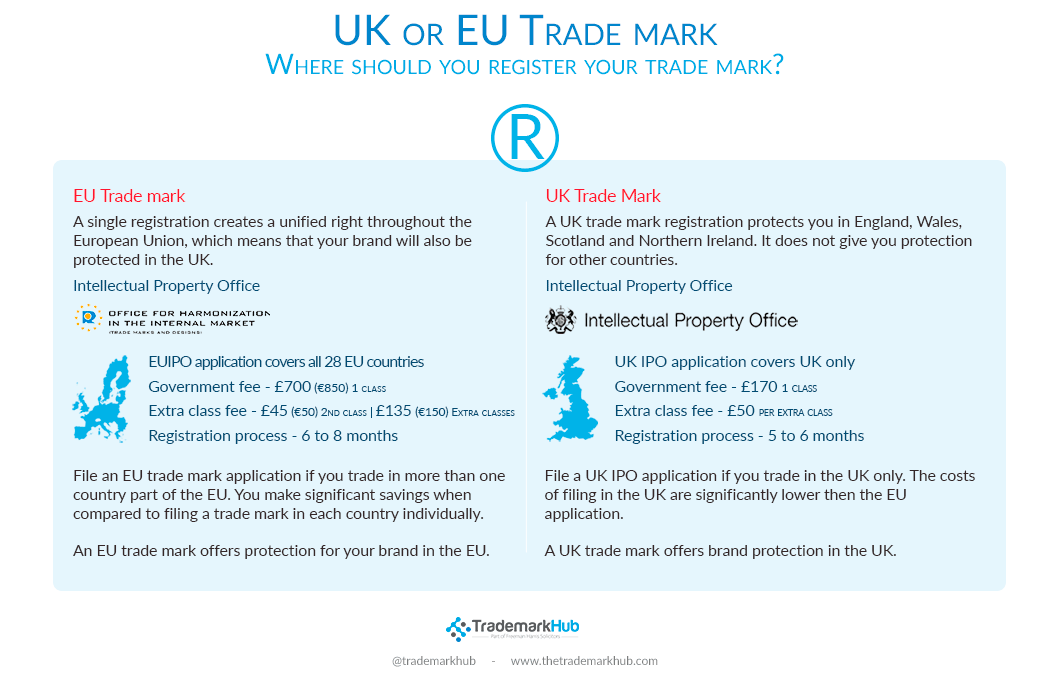From the 23rd of March, there have been changes to the EU trade mark registration process. This post has been updated to reflect those changes.
Trade mark registration is territorial in the sense that you must generally register your brand on a country-by-country basis. For example, a trade mark that is registered in the UK will only provide registered protection within the UK. A business or company which trades in different countries beyond the UK and which wants to secure trade mark registration will generally need to do so in each individual country in which it is actively trading. An important exception is the European Union Trade Mark (“EUTM”) which, with a single filing, provides registered protection across the whole EU territory without the need to apply to register your mark in each individual EU member state.
Deciding between an EUTM and a UK trade mark
If you are actively trading in several EU countries, you could secure registered trade mark protection for all of them in one go if you file an EUTM application. As a rule, the costs of EUTM registration are cheaper than separate national filings in more than two or three EU states. And, of course, upon registration, your mark will enjoy protection across all 28 EU states (or 27 after the departure of the UK from the EU).
If, however, you actively trade under your brand in the UK only then a national UK trade mark registration is probably the best way to go. Financially, it is far cheaper than filing an EUTM application.
The potential downside of EUTMs
Precisely because an EUTM registration protects your brand across the entire territory of the EU, it not possible to exclude one or more EU states from the EUTM application. A consequence of this is that a valid opposition or challenge to your EUTM from an earlier trade mark owner in just one EU state is enough to prevent completely the registration of the EUTM. So, for example, a successful opposition by the holder of a national trade mark registration in Malta (whose population is about 0.01% of the EU total) would prevent you from obtaining EUTM registration, although you could still seek protection at a national EU state level.
Please note also that if your UK or EUTM application should be refused, you will not be able to recover the filing fees which have been paid.
The Fees
EUTMs are levied by the EUIPO on a per-class scale. For a single-class application, the EUIPO official fees are eur850. A two-class application will incur official fees of eur900. There is a fee of eur150 for each additional class thereafter.
UK national trade mark fees are also levied on a per-class basis. The UKIPO official fees for a single-class application are £170 and the extra fee for each additional class is £50. Additional official fees may also be payable depending on the type of mark. For example, a series mark will incur an additional fee of £50 for each mark added to the series.
You can calculate the fees for your trade mark by using our trade mark calculator.
Deciding between filing your application in the UK or the EU requires consideration of several factors. It is highly advisable therefore to consult with a trade mark specialist in trade mark law who will be able to give you the best trade mark filing strategy adapted to your needs. Click here to complete our form and one of our trade mark lawyers will contact you to discuss your options.



